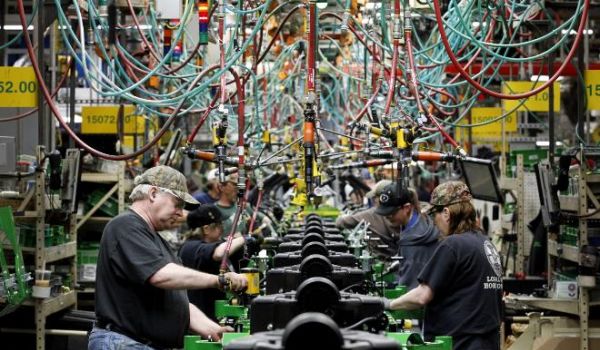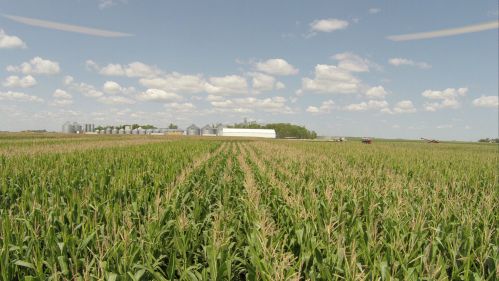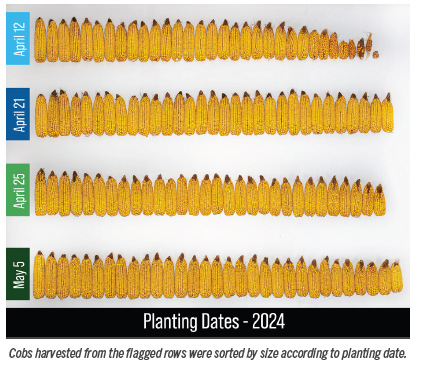Your Corn Is like a Factory Assembly Line

The assembly line in a factory operates efficiently only when it has the right supplies at the right time. If inputs run out, production may halt. Continuing the assembly line without the right supplies can result in a lower-quality product. So it is with corn production.
July is an eventful month for corn production – this is the time when vegetative growth is most rapid, reproduction begins, and yield can be affected most significantly. Up to this point, the plant has been building both the factory and the pump in order to begin delivering yield into the cob. Now we need to feed the factory through the pump, while making sure we have the right resources available.
With tasseling just around the corner, this may be the most crucial time in a corn plant’s development. By the V12 stage, ear girth is fixed; you can check this by examining the uppermost ear shoot and counting the number of ovules. There will be between six and eleven rows of ovules, which will each form two kernels. As a result, there is always an even number of rows on an ear of corn.
From V12 to VT (tasseling), the length of the corn ear is determined. The corn plant’s water and nutrient uptake is highest during this growth period as well, so stress from heat, drought, and lack of nutrient uptake will each affect yield.
The reproductive stage of corn starts with R1 or silking. In the beginning of R1, the first silk emerges from the husk. Silk formation is one of the most important yield factors in corn production. If the plant is under stress during this stage, silk formation may be delayed. Poor pollination is seldom, if ever, due to failure of the tassel; the silk receiving the pollen on time is the key.
Approximately 2,000 to 5,000 pollen grains are produced for each silk. Silks lengthen as much as one inch per day for the first day or two, but gradually slow over the next several days, halting about 10 days after silk emergence. Within 24 hours of the pollen grain attaching anywhere on the silk, the kernel will be pollinated. Most of the hybrids in our region reach 50% silking after 1200 accumulated Growing Degree Days (GDDs) from planting.
The corn plant takes in the most nutrients during the late vegetative stages through the flowering stage. Starting around 1000 GDDs, the corn plant begins a rapid uptake cycle of Nitrogen, Potassium, Phosphorus and Sulfur. Nitrogen and Potassium peak early, while Phosphorus and Sulfur steadily increase throughout reproduction. This is why later application of some of our soil-mobile nutrients (N & S) can be a very effective way to maximize yield. Balanced nutrient uptake is critical as well. A plant lacking in Nitrogen will not efficiently absorb phosphorus, potassium, and sulfur.
A corn plant obviously has more uncontrollable variables than an assembly line. But with precision ag advances, we can now do more to prevent nutrient supplies from running out.
Pay attention this summer to your “corn factory” by tissue and soil sampling along with side-dressing, so that you maximize your “corn assembly line”, resulting in the highest yield possible.












